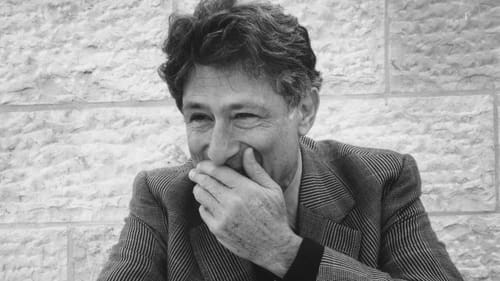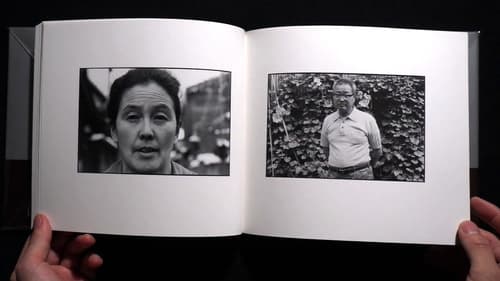Makoto Satō
Nacimiento : 1957-09-12, Aomori, Japan
Muerte : 2007-09-04
Historia
Makoto Satō was a Japanese documentary film director.

Director
Documentary filmmaker Makoto Sato offers this reflection on the life and career of Edward Said, the deeply influential literary and cultural critic, Columbia University academic, and outspoken advocate for displaced Palestinians, of whom he was one. Exploring the landscapes of Said's childhood and how they influenced his philosophy, this film features rare footage of Said and interviews with many of his colleagues, including Noam Chomsky.

Coordinating Producer
A documentary that records the daily life of a mother with a limited life expectancy and a grandmother, directed by the daughter, Haruyo Kato.

Director
Satō Makoto discovered documentary film when he visited Minamata (well known as the former site of an environmental disaster) as a student, and worked on Katori Naotaka’s The Innocent Sea. While touring Japan with the film, he met people who lived by the polluted Agano River in Niigata and decided to make a film about them. Living there with seven crew members for three years, Living on the River Agano was completed in 1992 and showed people who live with the river and work in agriculture and fishing, quietly probing the cruelty of nature destroyed. Ten years later, and after attending several funerals of people who appeared in the first feature, the team returned to the area. The resulting film Memories of Agano is a ghostly poem on people, fields, stories, songs and buildings receding into absence, the power of images and the strength of sound to revive the past.

Director
Interviews about Japan's deployment of Self-Defense Forces in Iraq collected from Middle Eastern intellectuals, cultural figures, and Palestinians living in refugee camps in March 2004.

Director
An unusual family portrait questioning the definitions of art, family, and what it means to be disabled. Imamura Hanako is a 22-year-old girl with severe autism. Once a week she attends a painting class, where she paints pictures in oils. Every evening after dinner, she creates what her mother Chisa has named “food art.” This may only involve arranging the leftovers from the day’s meal on the floor or a tray, but Chisa records the works every day, accumulating some thousands of photographs. The collection of photographs has now been exhibited around the country. Following Hanako’s daily life in the routine of the four members of the Imamura family, we watch as a portrait of a “very ordinary” family unfold.

Director
In 1983, photographer Gocho Shigeo met an early death at the young age of 36. The view we see reflected in Gocho’s photographic images has become more profound over time since his death and has struck a chord in people’s hearts. While focusing on Gocho’s collection of photographs Self and Others, the film also visits places associated with him, creating a collage with the manuscripts, letters, photographs and voice recordings remaining in an attempt to capture “one more gesture”—a theme pursued by Gocho through photographic expression. This film is neither a critical biography nor a monograph on the photographer. Rather, we are offered a new perception. As if mesmerized, the photographs Gocho left behind captivate us in their gaze.

Editor
This is a film about seven artists. It's also a film about seven people who are mentally handicapped. In the course of this touching film, we discover how art may provide a route to the human interior.

Director
This is a film about seven artists. It's also a film about seven people who are mentally handicapped. In the course of this touching film, we discover how art may provide a route to the human interior.

Director
Documentary, 16mm

Editor
Before the Chernobyl disaster, Nadja's village was home to 300 peasant families. After evacuation, only 6 households remain and access to the village is shut off. The remaining villagers continue to raise livestock, cultivate crops, and continue with their lives regardless of contamination.

Director

Editor
Sho Watanabe, 77, has worked as a lighting technician for many years, longing to work in the film industry. However, when his wife, Tomiko, suddenly developed Alzheimer's disease, he took a video and 16mm camera and began documenting her and the people around her. This film is the result of compiling and editing the vast amount of film he had accumulated in this way.

Director
Sho Watanabe, 77, has worked as a lighting technician for many years, longing to work in the film industry. However, when his wife, Tomiko, suddenly developed Alzheimer's disease, he took a video and 16mm camera and began documenting her and the people around her. This film is the result of compiling and editing the vast amount of film he had accumulated in this way.

Editor
In 1964, a chemical factory in Niigata Prefecture dumped mercury into the Agano River, the beginning of a manmade tragedy that would affect locals for years to come. Mercury poisoning led to high occurrences of Minamata disease, a neurological syndrome that causes severe physical and psychological ailments and death. Sato Makoto and his crew of seven spent three years in Niigata documenting the life and thoughts of locals.

Director
In 1964, a chemical factory in Niigata Prefecture dumped mercury into the Agano River, the beginning of a manmade tragedy that would affect locals for years to come. Mercury poisoning led to high occurrences of Minamata disease, a neurological syndrome that causes severe physical and psychological ailments and death. Sato Makoto and his crew of seven spent three years in Niigata documenting the life and thoughts of locals.

Assistant Director
This documentary follows the lives of Minamata disease victims who still suffer a quarter of a century later.

Producer
This documentary follows the lives of Minamata disease victims who still suffer a quarter of a century later.













